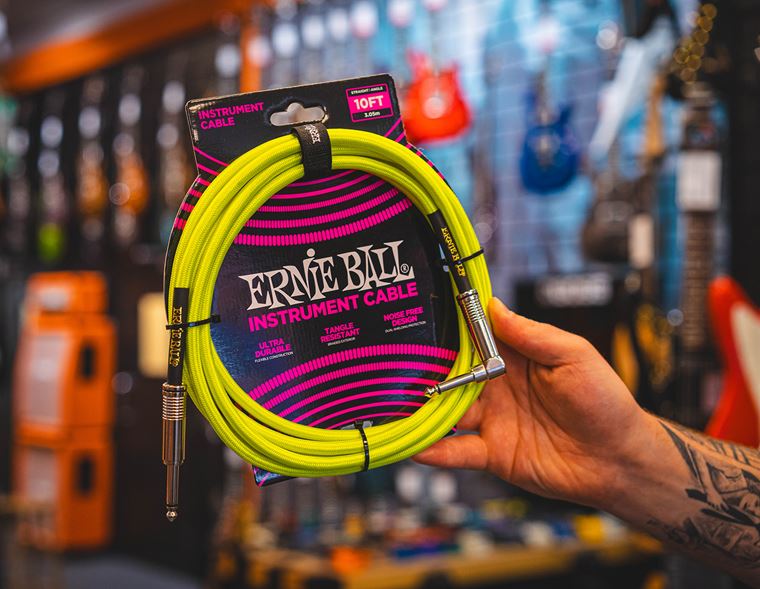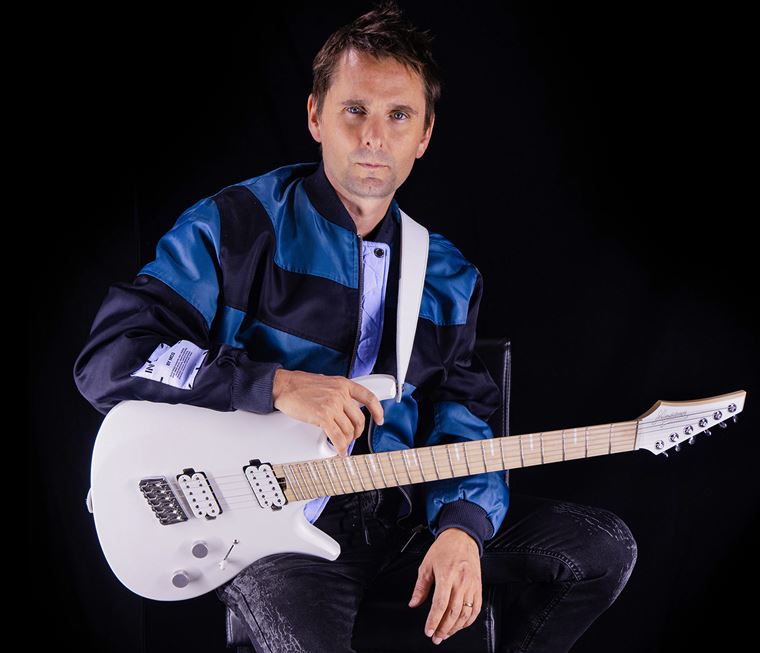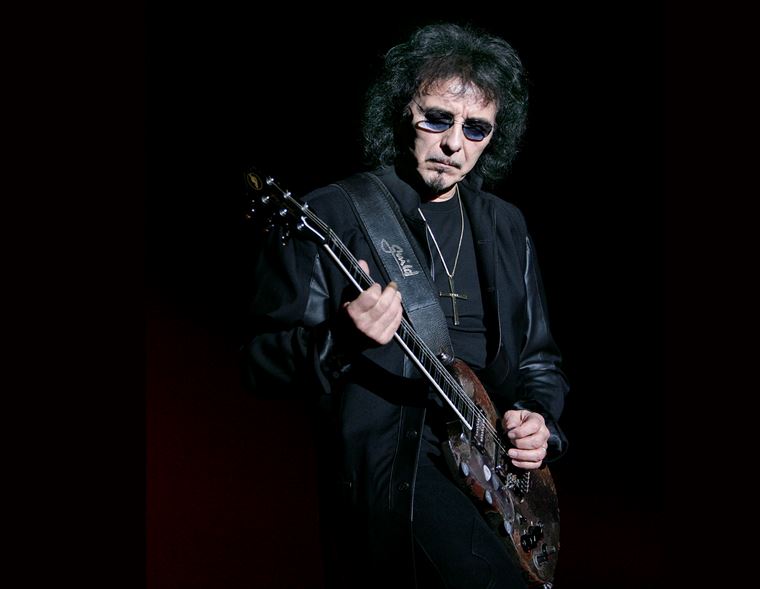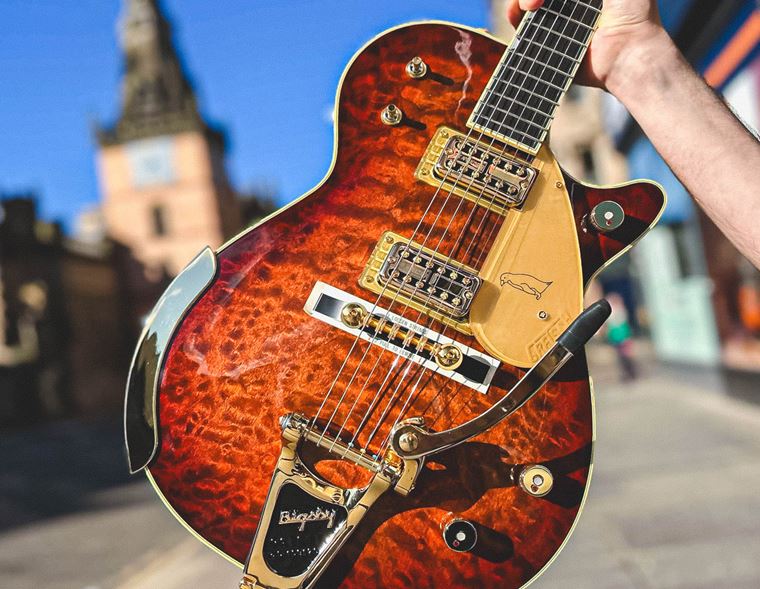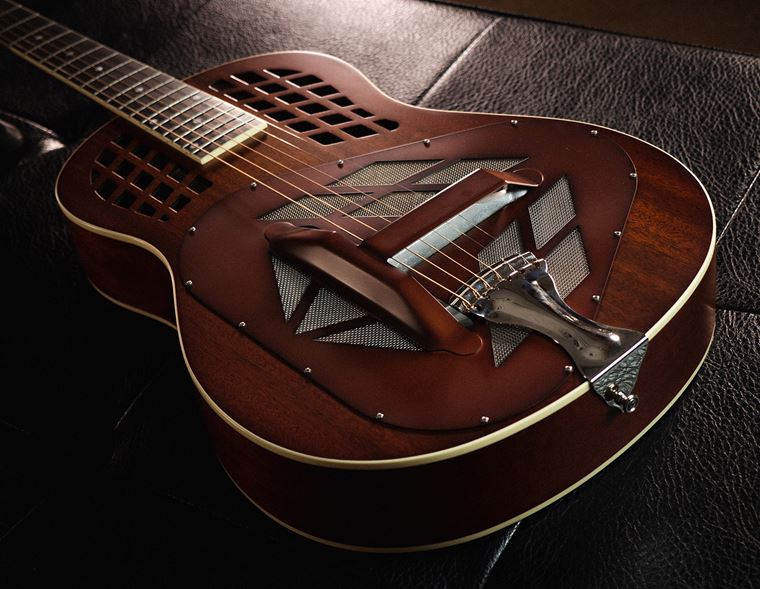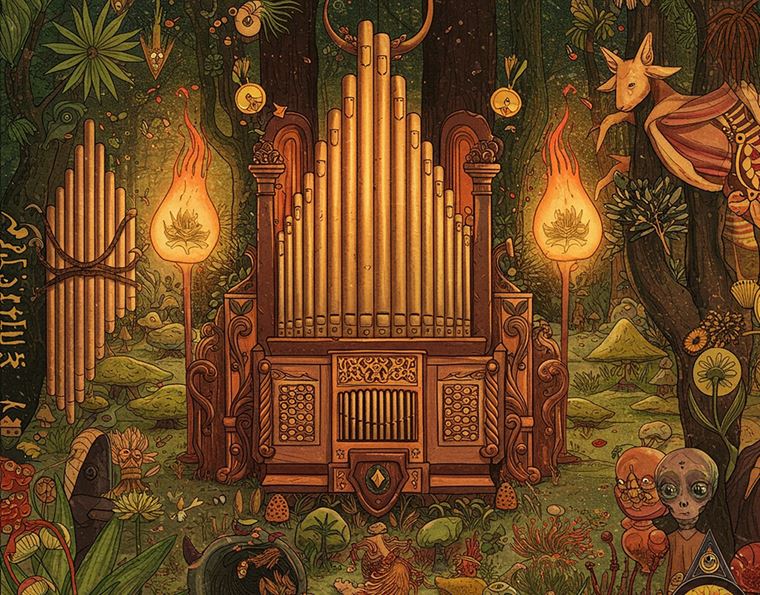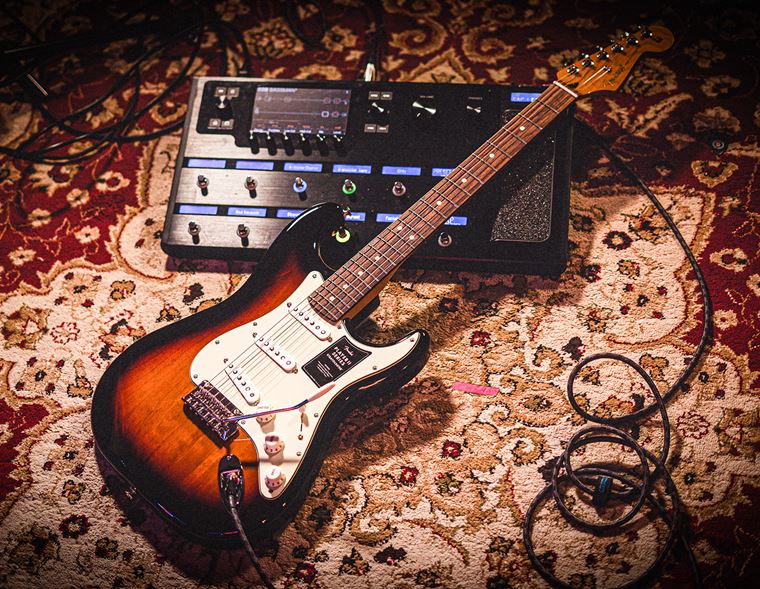What is an Extended Range Guitar? Our Experts Explain
Extended range guitars: what are they? In simple terms, today’s blog will explain and demystify just what that term means, along with other terms such as ‘multiscale’. I’m going to show you a range of extended range guitars, 7 string and 8 string instruments, and tell you what makes them different, besides the obvious!

If you’re interested in understanding more about this quickly growing area of the guitar universe, read on!
Contents
- What is Meant by Extended Range?
- 7 String Guitars
- 8 String Guitars
- Multiscale Guitars
- How are Extended Range Guitars Tuned?
- Benefits of an Extended Range Guitar
- Drawbacks of Extended Range Guitars
- Who Uses Extended Range Guitars?
- Extended Range Guitars Buying Guide: Affordable, Mid-Price and Top End
- Brave New World
What is Meant by Extended Range?
Simply put, ‘extended range’ simply refers to any guitar that goes beyond the usual blueprint of 6 strings, tuned from low E to high E. Most extended range guitars have additional strings, and some have an innovation called a ‘multiscale’ scale length, too. Learn about each of these below in more detail, but generally, extended range guitars are what are currently at the cutting edge of contemporary guitar design.

7 String Guitars
7 string guitars are the most common type of extended range instrument. Steve Vai gets credit for designing the first mass-produced 7-string (the Ibanez Universe) but ex-Scorpions guitarist Uli Jon Roth actually had his own 7 string Sky guitars made a good half-decade before that.
However they came about, 7 string guitars add an extra low string below the low E for a deep growl that is very difficult to achieve satisfactorily any other way. Many 7 string guitars these days have a longer baritone scale length (26.6” is popular, as opposed to 25.5”), so they can often have longer necks.

8 String Guitars
8 string guitars take their lead from 7 string guitars but essentially go one further. In addition to the low B of the 7 string, 8 string guitars have an extra low string, most often tuned to F#. Due to the low frequencies being used, it is very unusual to see 8 string guitars using normal scale lengths: indeed, 26-5”, 27” and even 28” are all widely used, depending on the manufacturer.
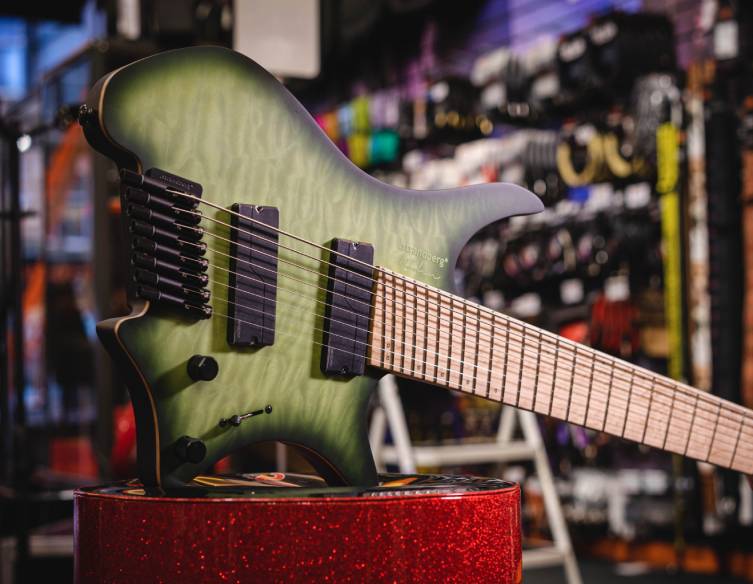
Multiscale Guitars
Multiscale guitars use two different scale lengths and angled ‘fanned’ frets to give extended range players more accuracy with their notes. A multiscale guitar can actually have 6, 7 or 8 strings. It’s not the frequency or overall pitch that matters at all here, but more the intonation and tension of the neck.
Basically, the lower strings have a longer scale length so that they intone properly and don’t buzz like crazy. The higher strings have a shorter (i.e. normal) scale length so that lead work doesn’t feel too tight and difficult. Since there are two measurements for scale length on the one neck, the frets are fanned out at precise angles to aid proper intonation across the board. You’ll recognise the look: the frets get more and more ‘seasick’ as they travel up in pitch, though of course the angles are precisely measured for optimum intonation of every note.

In terms of playing a multiscale guitar, it’s actually a little bit more natural to your fingers than regular straight frets, so you’ll only take a little while to become fully accustomed to the difference.
Multiscales, as we in the industry awkwardly refer to the 2-in-one scale length, can have a variety of differing values, but we’re generally talking 25.5”-27” or similar. As always, there are plenty of different ones, but you get the idea!
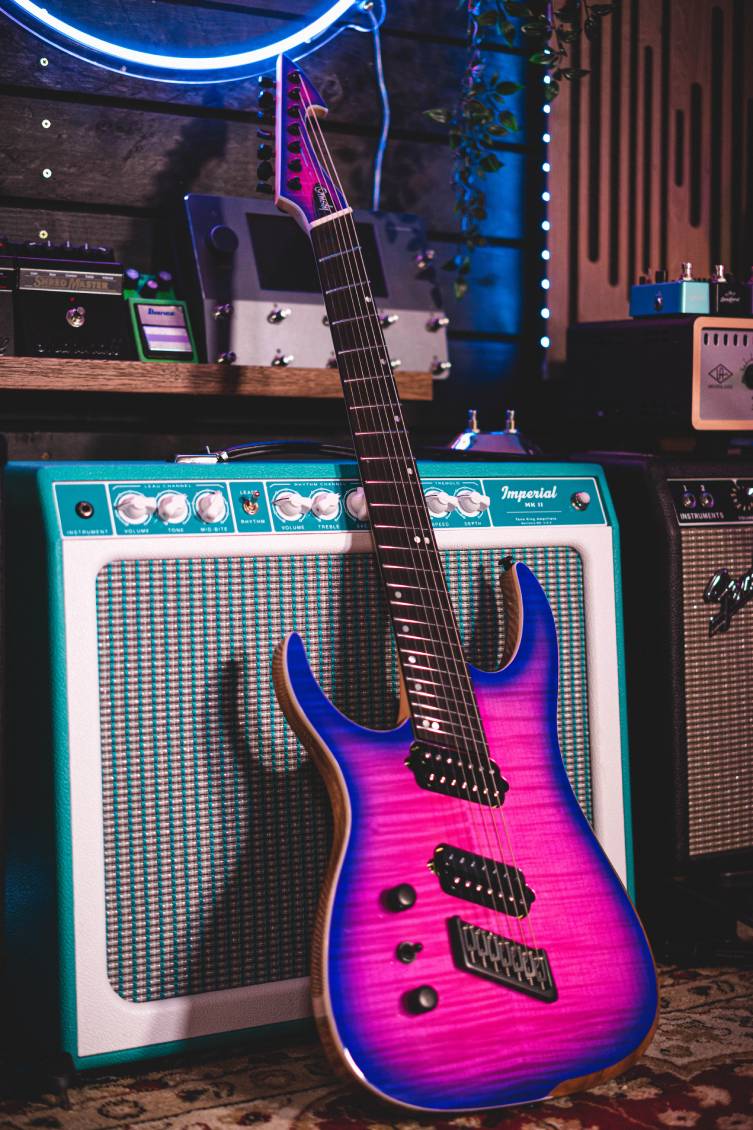
How are Extended Range Guitars Tuned?
Extended range guitars are like any other guitars in the sense that how you tune them is completely up to you. That said, there are conventions you can use to begin with, and so here’s how they stack up:
- E A D G B E : standard 6 string guitar
- B E A D G B E : 7 string guitar
- F# B E A D G B E : 8 string guitar
- C# F# B E A D G B E : 9 string guitar
As you can see here, each factory tuning, if you will, simply builds on the standard 6 string tuning, with each additional lower string being tuned to a note that’s roughly a 5th below the next one, as usual for most of a standard guitar tuning.
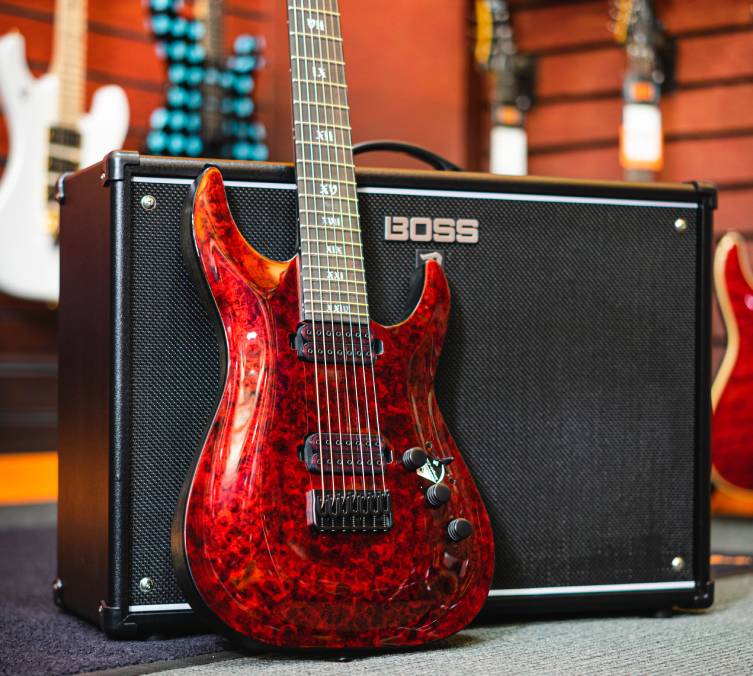
That said, plenty of players ignore all this and do what they like: Korn tune everything down one step, so their 7 strings are tuned A D G C F A D, for example. Loads of players like to drop the lowest string in the same way that Drop D tuning works on a standard 6 string guitar. This gives you a Drop A on a 7 string, for example, and a Drop E on an 8 string, which - let’s get real here - is the same frequency as a standard tuned bass!
Benefits of an Extended Range Guitar
The benefits of an extended range guitar are numerous. Why don’t I keep things simple and just write a fun list? Okay then…
- New notes to play
- New chord voicings
- New textures & tonalities
- Extended chords, scales and arpeggios
- Refresh and revitalise your playing experience
- Bring your riffs up to date for ‘now’
- Open new avenues in songwriting
- If the guitar is also multiscale, then your intonation will be improved
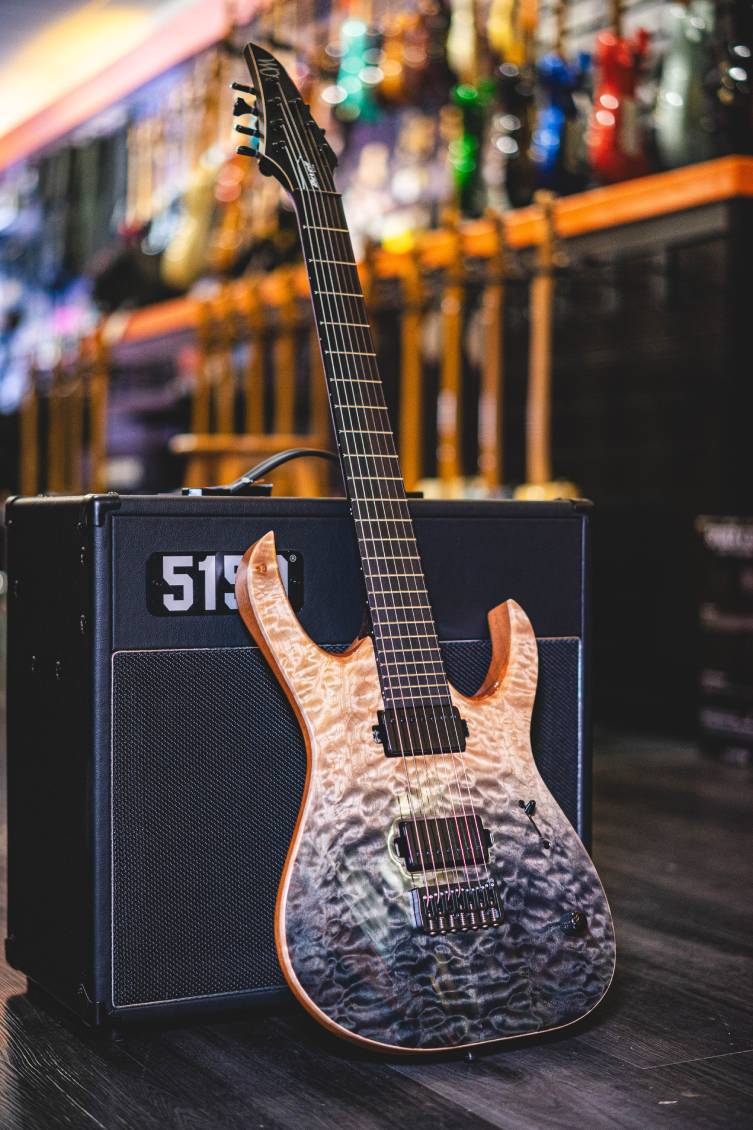
Drawbacks of Extended Range Guitars
There are many benefits, but for every yin, there must be a yang: here are the drawbacks…
- Increasingly wide necks are an obstacle for a while
- Extra strings can definitely cause a mental barrier for a while
- Certain playing styles become more difficult (shredding on a 9 string? Hardly easy!)
- The physical size (baritone neck etc) can make these too long for cases and gig bags
- Strumming chords becomes an increasingly unusual and difficult task
- Limited styles available in terms of visuals
Who Uses Extended Range Guitars?
Extended range guitars are most popular with the contemporary metal and prog crews, including Djent players and so on. This is perhaps the natural home for such a forward-thinking instrument, particularly one which imparts such a clearly heavy sound.
Everyone from the aforementioned Korn to John Petrucci (Dream Theater) are onboard, as are modern players like Tosin Abasi (Animals as Leaders), Misha Mansoor (Periphery) and Jason Richardson.
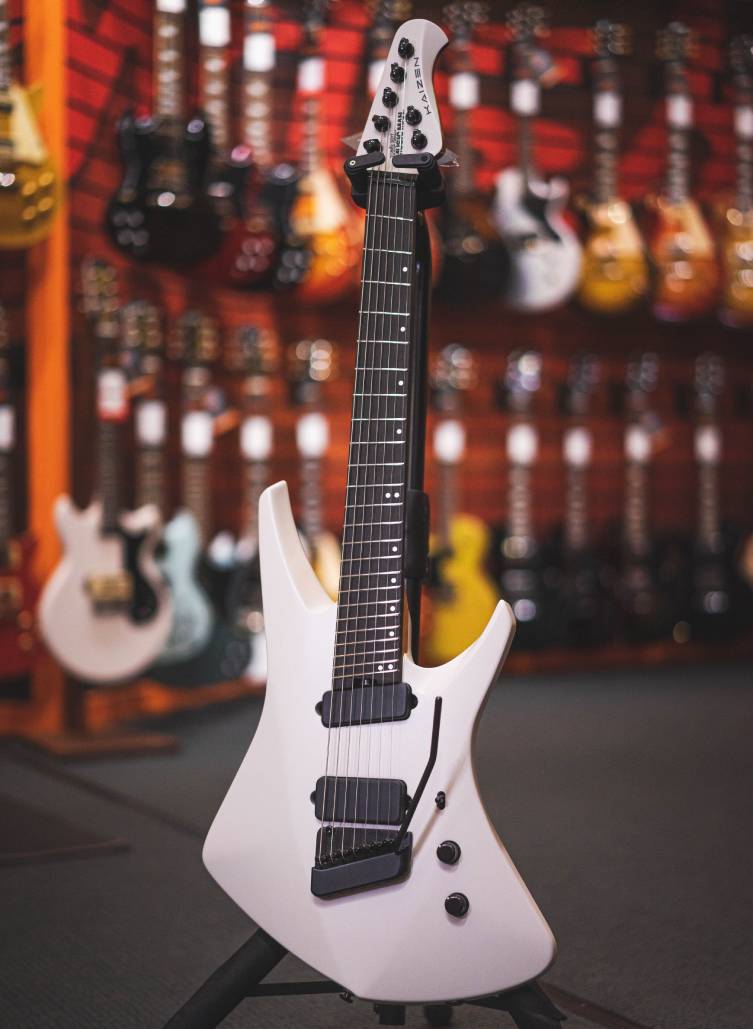
Swedish avant-metal pioneers Meshuggah are probably more responsible for the resurgence (and re-assessment) of extended range guitars than any other band, since they adopted them in the mid 90s and continued to develop how they used them subsequently. Well known as the progenitors of the current tech metal scene, they have also somewhat distanced themselves from it. Meshuggah did go as far as using 9 string guitars (they are quite a rare thing even today), but have mainly settled on 8 string guitars.
Aside from metal, you’ll see some jazz and fusion players adopting extended range guitars, and lots of current YouTubers use 7 and 8 string guitars too.
Extended Range Guitars Buying Guide: Affordable, Mid-Price and Top End
Finally, why don’t we look at some specific guitars? I’ll pick out three that I personally think are good choices, each in a different price bracket. Each guitar is taken on its own merits, and while hardly an exhaustive ‘top gear list’, it’s a brief set of examples to illustrate what’s out there. I’m using ‘best’ in the headings, but think of it more as ‘My Picks’, than anything else. Here we go…
Best Affordable Extended Range Guitar: Jackson JS32-8
My first choice today is for an impressive 8 string from a top brand, that will definitely not break the bank! In the past, there was no such thing as a cheap 7 or 8 string guitar, since presumably the setup costs of manufacturing them were too high. Nowadays though, extended range guitars are a significant part of the guitar world, and it means that excellent brands such as Jackson can offer this very nice Dinky-bodied JS32-8 for a very tempting price!

If you haven’t owned an 8 string guitar before, I’d say that this Jackson is a wonderful way to enter the world: it’s affordable, so it’s easy to justify, but it’s also a proper performer. You’ll get a playing experience from this that will only encourage you further into the extended range world. Cost-cutting is done sensibly here: there are no branded pickups, the bridge is simple, the finish is satin black, decoration is minimal (though it’s still a handsome looker with a bound neck and an arched contour on the top) and so on.
What matters - how it feels, performs and sounds - are all, I’d say, punching significantly higher than the price would indicate. Once again, Jackson prove themselves as one of the preeminent hard rock and metal brands.
Best Mid-Price Extended Range Guitar: Ibanez Premium UV70P Universe
Ibanez’s build quality has always been something you can rely on, and their Premium range makes a point of taking that ethos further. This Ibanez UV70P Universe is based pretty closely on the original Universe model brought out in collaboration with Vai back in 1990. It’s a 25.5” scale length 7 string guitar, so you’ll get that low B in without sacrificing too much feel.
What do I love about this guitar? Plenty: the black and green colour scheme is super cool in a real ‘vaporwave’ way; the pickups are excellent DiMarzio units; and the guitar has a locking Edge tremolo (basically Ibanez’s take on the licenced Floyd Rose tremolo), which is something that many makers tend not to put on extended range guitars these days. That’s a mistake!

Obviously, Steve Vai and Korn fans will like this one, but I think it has enough crossover appeal to be an excellent fit for any player looking to add some low-end beef to their sound. The standard scale length puts it in more familiar territory than some of the other guitars I’m looking at, but the low B string and locking trem will really open up your playing.
Best Top End Extended Range Guitar(s): Ormsby Hype GTR 8 & Strandberg Boden Prog NX7
I’m going to slightly bend the rules here and allow two recommendations here, since choosing only three extended range guitars to feature overall is a horrible ordeal! These two are considerably different too, so maybe that justifies their joint inclusion?
Anyway, my first choice is the stunningly exotic Ormsby Hype GTR 8, shown here in its Caribbean finish. Now, how many guitars out there can boast a hammerhead shark-shaped f-hole? Come on! This sleek looking beauty is one of Ormsby’s (Australian brand, hence the shaaaak) main models, itself based on the semi-legendary guitars built by the Black Machine brand.

Ormsby go for custom pickups and custom bridges, so the design elements onboard are precisely engineered for this guitar, rather than picking from a list of hardware manufacturers. We see an 8 string multiscale neck here, and it uses a 25.5” - 28.3” multiscale length. Gotta love that beautiful figured top, along with that dangerous looking harpoon headstock. If you want to make a visual statement at your gigs, then this Ormsby will most certainly help you get there, but it’s also an exceptionally well put together instrument with a wonderful sound.
And that shark!
My other choice is the Strandberg Boden Prog NX7, and guitars do not come much more cutting edge than this! Everything about the Strandberg range of guitars has been designed from the ground up by founder Ola Strandberg. Having spoken with Ola a number of times, I’ve always come away impressed by his commitment to develop the instrument and bring it into the future. Ergonomics and player experience are his main trips, along with efficiency. His headless ‘Boden’ guitar shape (it’s an area in Sweden close to where Strandberg originate) is the most popular style, and perhaps the most definitive of the brand.
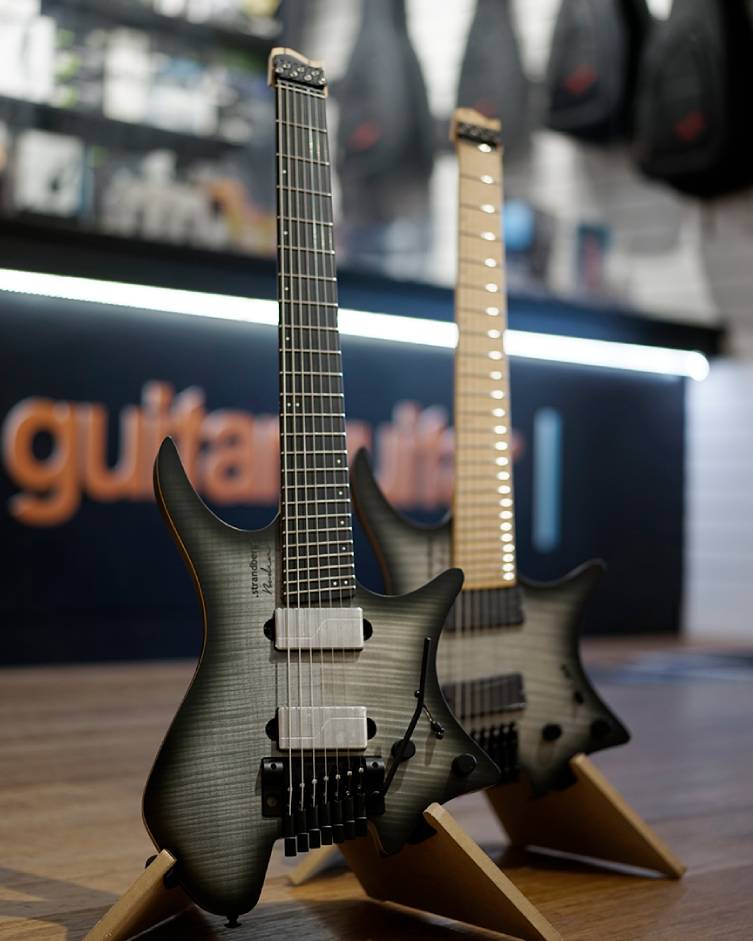
There are so many talking points here: the Endurneck, which is somehow both squared off and intensively comfortable; the chambered body that is perfectly shaped for comfort; the original design tremolo bridge that is built with aircraft-grade aluminium…the list of innovations is long and impressive. Significantly, that big list would be a meaningless boast if the Strandberg didn’t impress as an instrument, and it most certainly does. I understand that such a bold look is not for everybody, but in terms of pure performance, this Prog model 7 string is pretty exceptional. 24 stainless steel frets angled for a 25-5” - 26.25” multiscale make this a very more-ish performer, and that crazy neck is actually as comfortable as the hyperbole suggests.
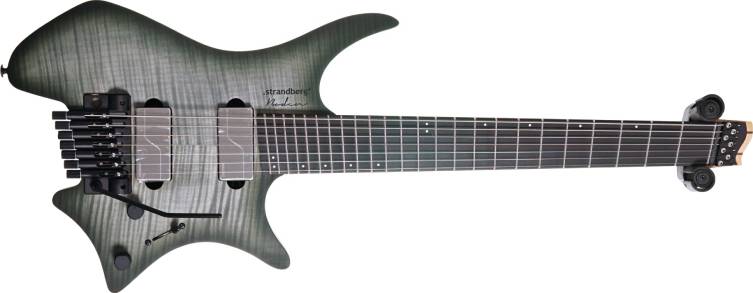
A set of Fluence Modern pickups finishes off a spec for a guitar that is confidently looking into the future horizon, instead of a mythical past. Just try one, whether you’re a Strat/Les Paul person or whatever, because you need to have a proper opinion of this brand.
Brave New World
Extended Range guitars represent the future of guitar. Us guitarists tend to be a conservative bunch, looking back to the rockstars of the 60s and 70s, even though that was over half a century ago now. Moving ahead into a contemporary area of guitar design is necessary, even if it’s only on the edges of the culture. Without negating the classics of the past - which we all justifiably love - I feel like there is so much new room to explore with these extended range instruments. You don’t have to be a metalhead or Djent fan, either: you just have to realise that there are no boundaries at all.


